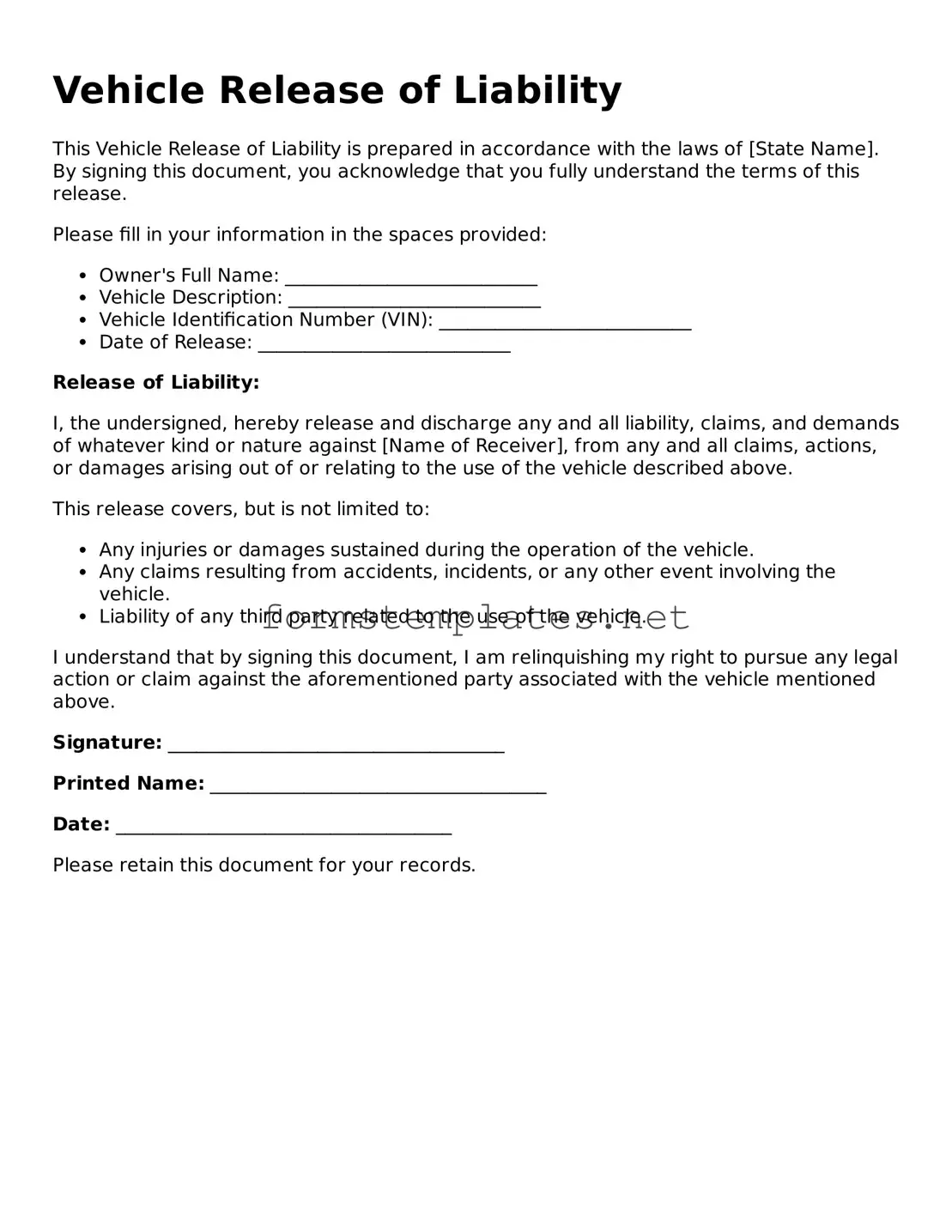Vehicle Release of Liability
This Vehicle Release of Liability is prepared in accordance with the laws of [State Name]. By signing this document, you acknowledge that you fully understand the terms of this release.
Please fill in your information in the spaces provided:
- Owner's Full Name: ___________________________
- Vehicle Description: ___________________________
- Vehicle Identification Number (VIN): ___________________________
- Date of Release: ___________________________
Release of Liability:
I, the undersigned, hereby release and discharge any and all liability, claims, and demands of whatever kind or nature against [Name of Receiver], from any and all claims, actions, or damages arising out of or relating to the use of the vehicle described above.
This release covers, but is not limited to:
- Any injuries or damages sustained during the operation of the vehicle.
- Any claims resulting from accidents, incidents, or any other event involving the vehicle.
- Liability of any third party related to the use of the vehicle.
I understand that by signing this document, I am relinquishing my right to pursue any legal action or claim against the aforementioned party associated with the vehicle mentioned above.
Signature: ____________________________________
Printed Name: ____________________________________
Date: ____________________________________
Please retain this document for your records.
